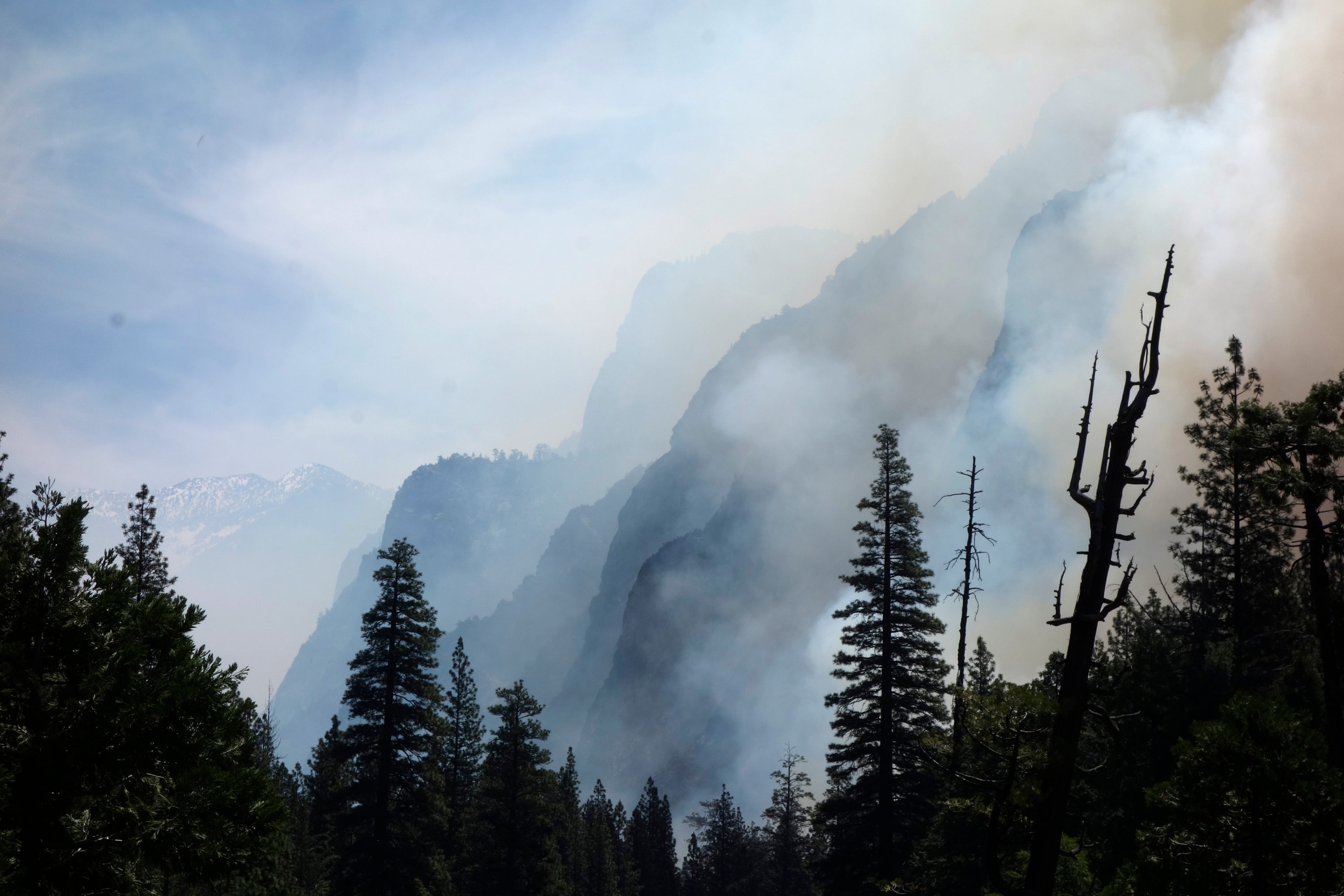Study: 10 UNESCO forests emit more C02 than they soak up
A U.N.-backed report says sites containing some of the world’s most treasured forests, including the Yosemite National Park in the U.S., have been emitting more heat-trapping carbon dioxide than they have absorbed in recent years

Your support helps us to tell the story
From reproductive rights to climate change to Big Tech, The Independent is on the ground when the story is developing. Whether it's investigating the financials of Elon Musk's pro-Trump PAC or producing our latest documentary, 'The A Word', which shines a light on the American women fighting for reproductive rights, we know how important it is to parse out the facts from the messaging.
At such a critical moment in US history, we need reporters on the ground. Your donation allows us to keep sending journalists to speak to both sides of the story.
The Independent is trusted by Americans across the entire political spectrum. And unlike many other quality news outlets, we choose not to lock Americans out of our reporting and analysis with paywalls. We believe quality journalism should be available to everyone, paid for by those who can afford it.
Your support makes all the difference.Sites containing some of the world’s most treasured forests, including the Yosemite National Park and Indonesia s Sumatra rainforest, have been emitting more heat-trapping carbon dioxide than they have absorbed in recent years, a U.N.-backed report said.
According to the report released Thursday, factors like logging, wildfires and clearance of land for agriculture are to blame. The excess carbon turns up from just 10 of 257 forests classified among UNESCO World Heritage sites.
The Switzerland-based International Union for Conservation of Nature and UNESCO, the U.N.'s cultural and educational agency, said their report provides the first-ever assessment of greenhouse gases produced and absorbed in UNESCO-listed forests. The study was based on information collected through on-site monitoring and from satellites.
The study adds to growing signs that human activities and the fallout from climate change — which scientists say has made weather extremes like drought and wildfires more likely — have transformed some natural carbon sinks that suck up CO2 from the air into net sources of it over the last two decades.
“All forests should be assets in the fight against climate change,” said Tales Carvalho Resende, a co-author of the report who works at Paris-based UNESCO. “Our report’s finding that even some of the most iconic and best protected forests, such as those found in World Heritage sites, can actually contribute to climate change is alarming.”
The consequences of climate change will be on many minds as world leaders gather in Glasgow starting this weekend for a key United Nations climate conference known as COP26.
The 10 sites that were net sources of carbon from 2001 to 2020 were the Tropical Rainforest in Sumatra; the Río Platano Biosphere Reserve in Honduras; Grand Canyon National Park and Yosemite National Park in the United States: Waterton Glacier International Peace Park in Canada and the U.S.; the Barberton Makhonjwa Mountains in South Africa; Kinabalu Park in Malaysia; the Uvs Nuur Basin in Russia and Mongolia; the Greater Blue Mountains area of Australia; and Morne Trois Pitons National Park in Dominica.
All told, however, the net carbon emissions from the 10 sites together amount to little compared to the total of roughly 190 million tons of carbon dioxide that are absorbed each year by all 257 UNESCO-listed forests. Of those, about 80 sites were net neutral, while the rest were net absorbers of carbon.
The 10 sites accounted for nearly 5.5 million tons of net carbon emissions. The most impactful was the Tropical Rainforest in Sumatra, which removed about 1.2 million tons from the atmosphere, but released another 4.2 million — making for net emissions of about 3 million tons. That was from a combination of logging and wood harvesting, as well as the impact of agriculture, the study found.
In the United States Yosemite generated a net of approximately 700,000 tons of carbon, largely due to a bout of devastating wildfires in the area in recent years.
Tales Carvalho Resende pointed to four “really huge wildfires” over the last decade at World Heritage sites.
“World Heritage sites serve as a laboratory — as observatories for environmental changes,” he added. “What is happening at World Heritage sites is just the tip of the iceberg ... in terms of emissions, it represents only a small portion of the whole picture.”
___
Follow AP’s coverage of the climate summit at http://apnews.com/hub/climate